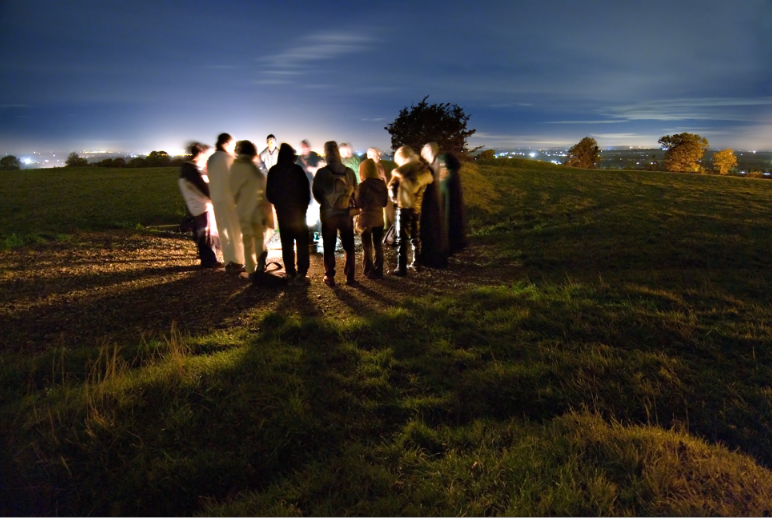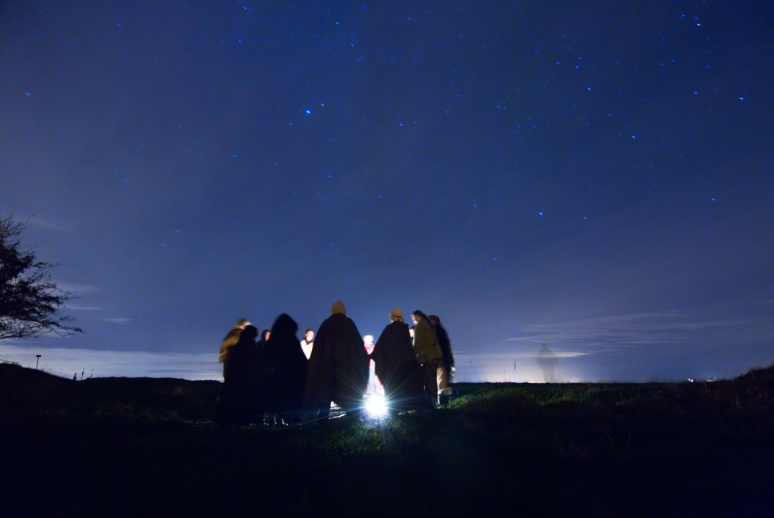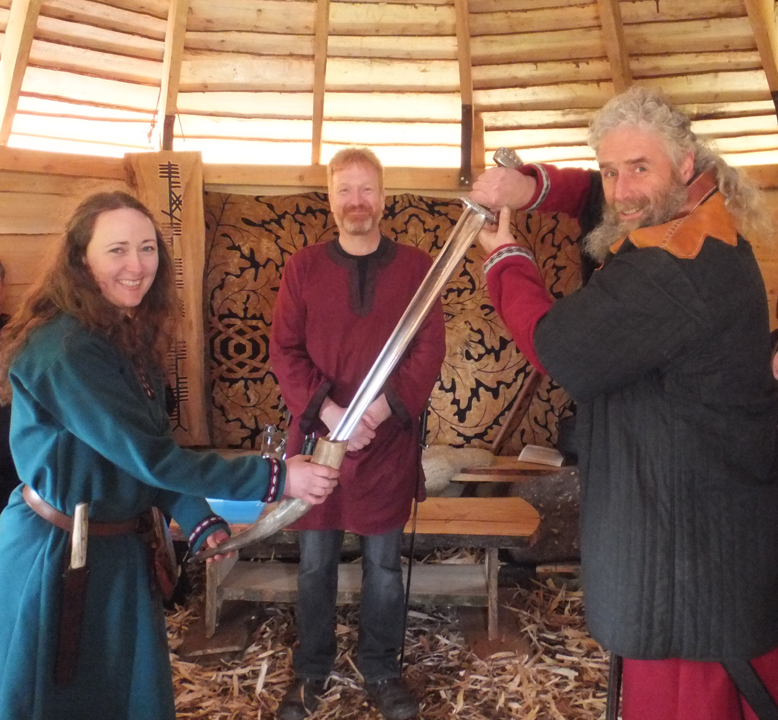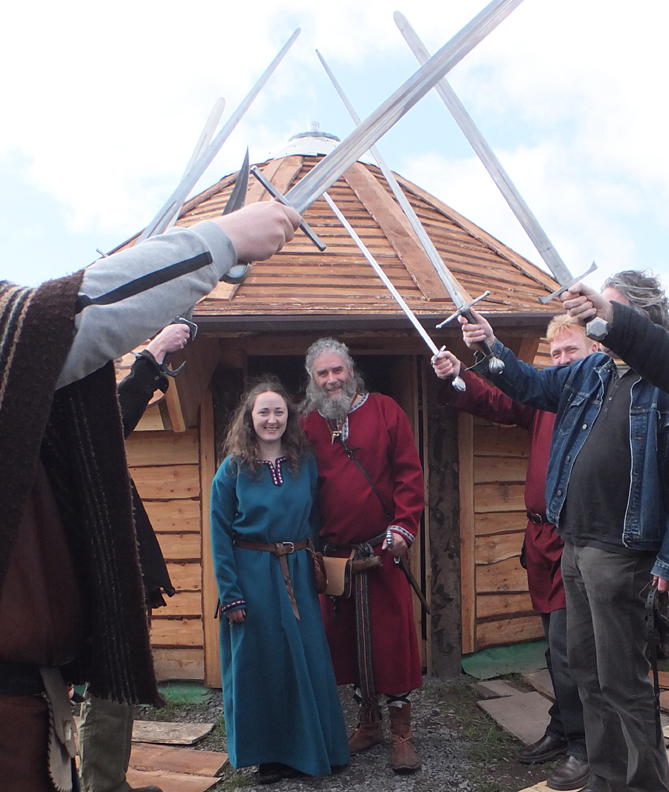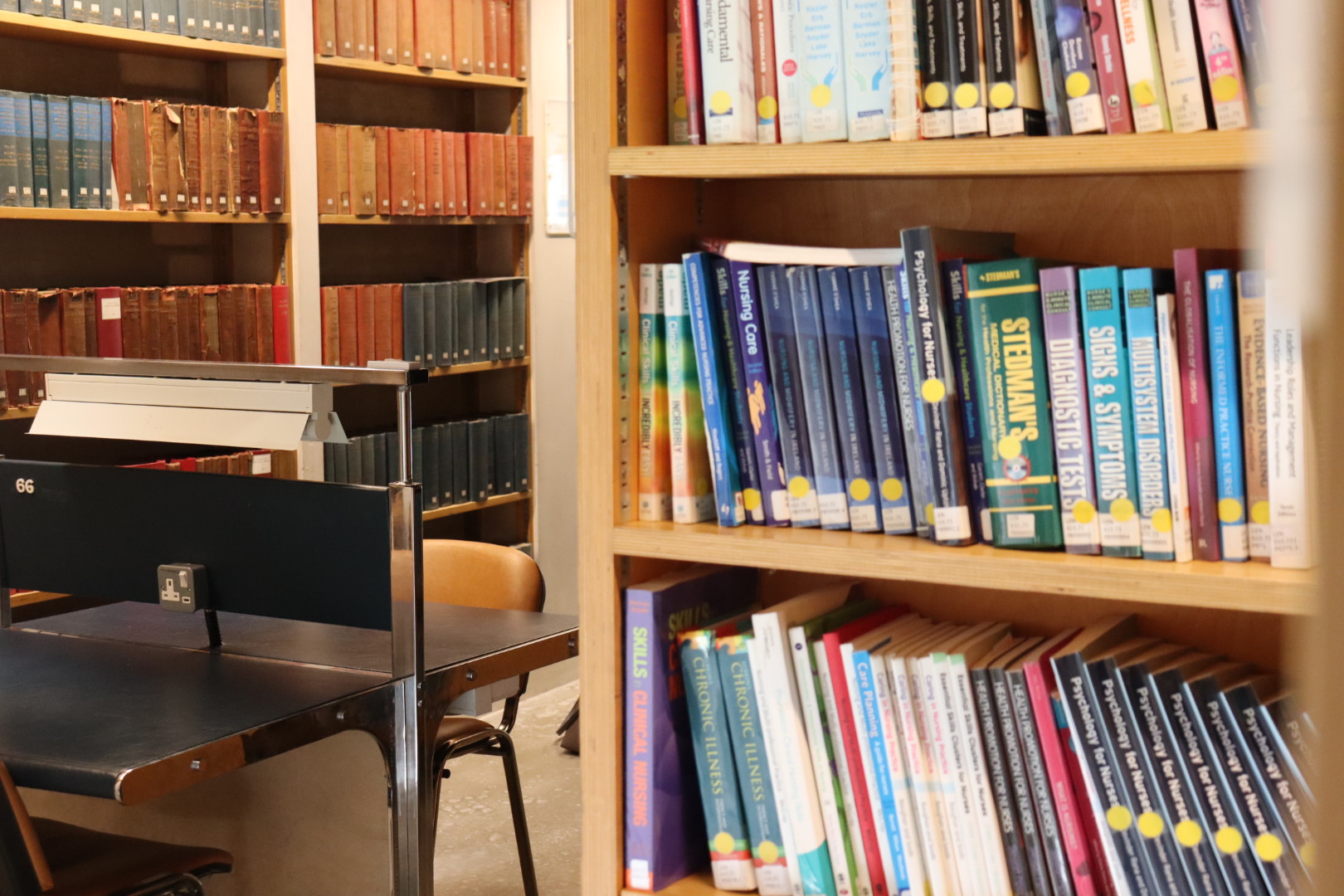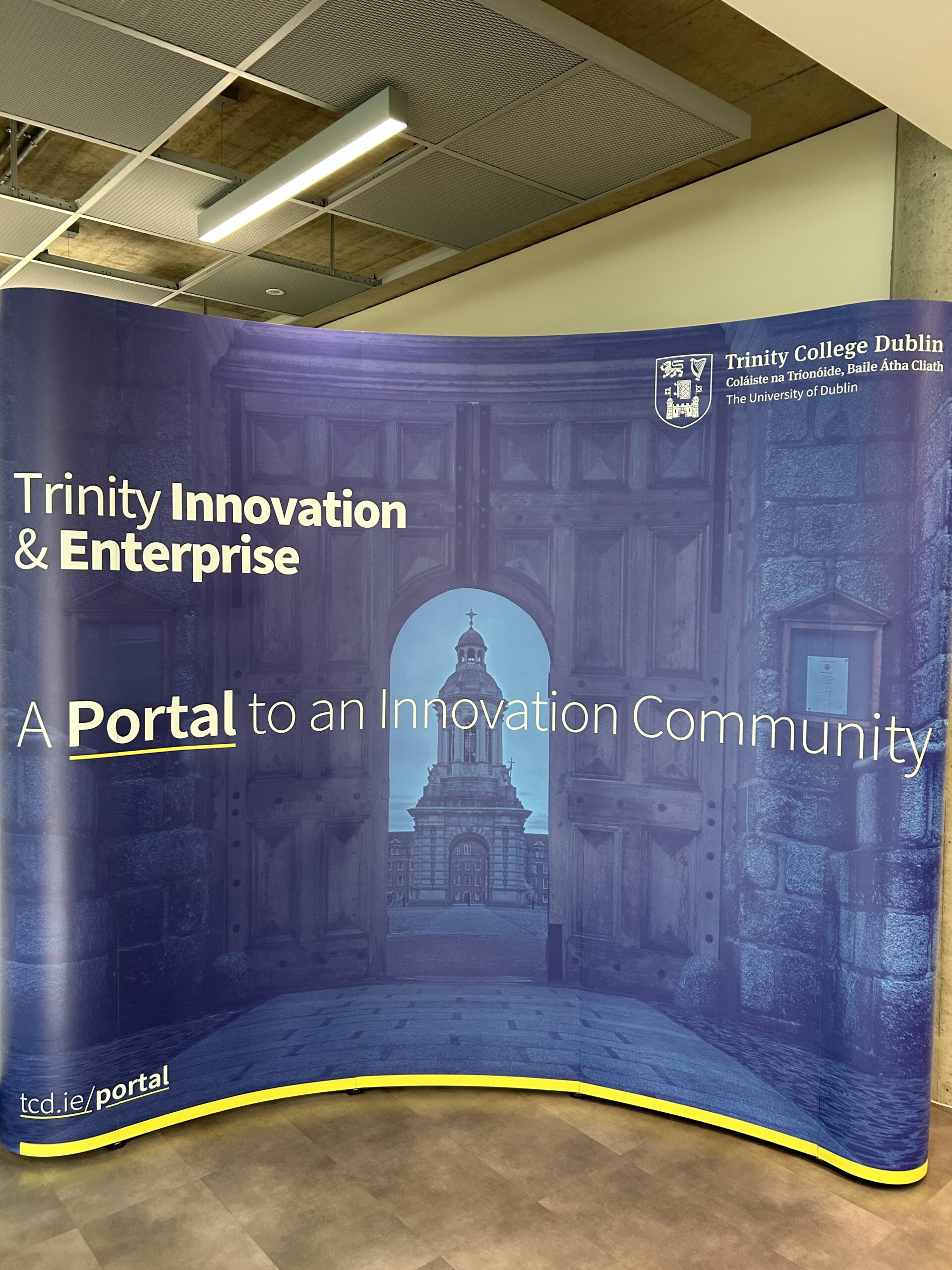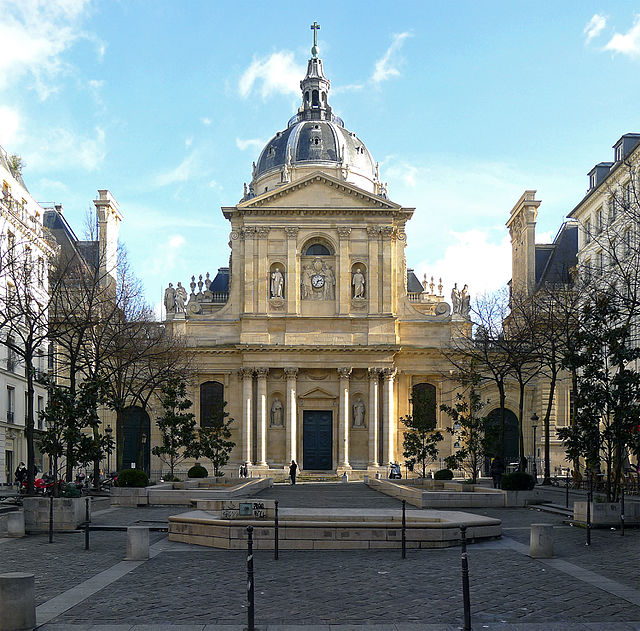Photography by Ken Williams
Words | Jane Fallon Griffin
It’s cold, the kind of night where the cold stings, your breath is visible and each gust of wind is icier and less welcome than the last. I shuffle my feet trying to get warm, pulling my hat firmly down over my ears and survey the scene at the bottom of the Hill of Tara. I’m here on a cold night in January to attend a Full Moon ceremony with Ireland’s modern Celtic Druids.
So what does a modern druid even look like? I feel like I should be looking around for a slimmed down version of Santa Claus, clad in brown rather than red robes and possibly accompanied by a wooden staff. Further off three people stand in a huddle. Spotting a blonde woman sporting long dreadlocks amongst them, I make my way over feeling that this somehow is an indication of Druidism. I approach them noticing one of the group carrying a candle lit lantern and another a can. Clearing my throat I ask for the whereabouts of the druids. She turns to face me, and I know at once she is not a Druid. She looks at me as though expecting me to crack a smile at any minute, indicating it was a bizarre joke of mine to break the ice with strangers. I don’t. She shrugs. I take that as my invitation to leave, alongside the fact the man drunkenly brandishing the can, ironically of druid’s cider, has started roaring to anyone who will listen about my search for Druids. It isn’t exactly the discreet entrance I had hoped for. A woman nearby with no Celtic accessories or mystical appearance, however is smiling encouragingly at me. “Druids eh?” she asked. I nodded my head vigorously, delighted to know that I wasn’t on a wild goose chase. “It’s Red John you’re looking for so”.
““Druids eh?”she asked. I nodded my head vigorously, delighted to know that I wasn’t on a wild goose chase. “It’s Red John you’re looking for so.”
Within minutes Red John who has a red beard and short red hair pulls up in a red car and shakes my hand. He motions towards the hilltop where he says the ceremony will take place. Now, whatever image I may have conjured up in my head of what a druid looked like, he most certainly is not it. John is an ordinary man, dressed in hiking boots, tracksuit bottoms, a fleece and a warm hat ready for tonight’s weather. There is no beard that sweeps the floor, no Dumbledore style tresses descending down his back and he appears like any other man preparing for a winter walk at the end of a long day at the office. However, by the time I march up the hill John has transformed, this time clad in a striped South American hooded poncho and carrying a well-carved wooden stick about a meter and a half in length. Slowly more people begin to arrive until we form a circle. The crowd is perhaps the most ordinary-looking group I have ever come across. Assembled together, we look like little more than a group of friends out for a nighttime walk, all wrapped up in warm jackets, hiking boots and gloves. There are about twenty people in all, including children.In the centre of the circle is a weathered black cauldron, in which John kindles a fire, while general chatter breaks out. People have come for different reasons, some having attended workshops with the Druids before, others starting New Year’s resolutions and others simply trying it out. One ambitious kid ventures off into the night to look for treasure with a metal detector and a torch while the rest of us stay and I prepare to search for some spiritual understanding of the Druids.
The ceremony starts, John introduces himself simply as John, but adds that we can call him Red John if we like. He looks around the circle gathered, asking us all to say something about why we are here and then indicate we are finished by saying “Sin é”. Some members of the group mention people they would like to place a blessing on, while others speak of evoking the presence of people of Celtic importance such as Lady Tara, Bridget and our ancestors. When it comes to me I opt to bestow a blessing on a sick friend and finish with “Sin é’. John guides us through the Full Moon ceremony, gesturing toward north, south, east and west, land, sea and sky as he explains the movement of energy. He rekindles the flame each time it threatens to extinguish in the cold wind and explains about the three inner cauldrons the druids hold central to good health. Despite the fact the moon is hidden by clouds and the fact that I am not a believer, the Full Moon ceremony feels very spiritual.
At the end John mentions how between the office and kids it can be hard to find the time for reflection cracking jokes about the mysterious floating lights in the distance (the budding archaeologist’s torch) and so we finish up, surprisingly enough, with a group hug and people leave in twos and threes chatting with calls of ‘see you later’ and ‘go raibh maith agat’. I head back down the hill thinking of the contrast between what I had expected and the surprisingly normal reality of of Celtic Druidism.
The very next morning I was up early and on the road for Castlerea in County Roscommon. The Celtic Druid Temple is located about five miles outside the town down several meandering country lanes. I had been told to look out for crossroads and found them, although calling them roads at all seemed to me a bit over-ambitious. Nevertheless after navigating through endless trees, fields, and hedges, there in the clearing was the bungalow of Ard Drui (high Druid) Con Connor .
Hopping out of the car, nothing seems particularly remarkable about the place. The door opens and I am greeted by Con, a tall bearded man with a Dublin accent clad in a hoodie emblazoned with the triple spiral Celtic symbol (the group’s logo) and he warmly welcomes me inside to the heat. Glancing sideways as I enter I notice a sheaf of arrows in a Celtic designed quiver, coats hung in the hall, shoes stood by the door and the overall atmosphere is that of your average rural home. Con assures me the sitting room was warmer and explains heating a house that’s over 200 years old can be tricky at the best of times. The next room is more like I had imagined. The walls are cream, insulated with hemp and lime putty and featured many Celtic symbols and ornaments. A workbench fills a corner, instruments used by the druids fills another while the whole room seemed to centre around a black old fashioned back boiler. Con invites me to sit down on a sheepskin seat and we begin chatting about last night’s Full Moon ceremony.
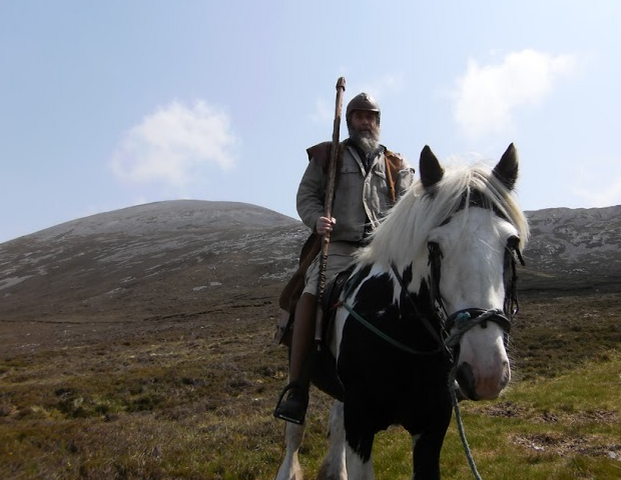
‘It might be difficult to believe today for people in their twenties’ he explains, ‘but anybody in their fifties and sixties would quickly tell you if we had tried to do a Full Moon ceremony on Tara in the fifties or sixties the priests would have got the police onto us and we would have been taken in and questioned, given a hard time. And if we had tried to do it in the thirties or forties the priests would have come up and started hitting us with sticks because it was not catholic and the Jesuit control of the country is huge.”
The Druids had been practising privately for years but only felt ready to go public recently. As Con proudly explains, ‘We re-established ourselves in the spring equinox of 2003 by hosting the Full Moon Ceremony on Tara and we have held continuous Full Moon Ceremonies that are open to everybody ever since.’
Given the position of the Druid in Irish mythology the idea of a modern day Druid is an interesting one especially regarding its origins. The knowledge of the modern Druids is what they themselves have learned.
“If we had tried to do a Full Moon ceremony on Tara in the fifties or sixties the priests would have got the police onto us and we would have been taken in and questioned, given a hard time. And if we had tried to do it in the thirties or forties the priests would have come up and started hitting us with sticks.”
Today, Con explains that anyone can become one. Con warned of anyone who claimed to be of direct Druid descent saying it is not inherited through a bloodline. “Some would claim it, because if they can claim it and get away with it, they will be seen as the most important and therefore they have power over you. This would quickly install a hierarchy, and with the hierarchy,- I’m closer to God than you- with that system you’ve got imperial domination, you’ve got to do what you’re told, you’ve got punishments and so on. I don’t believe that there are any real blood links or training links between ancient druids and modern druids.”But what makes a Druid? Con explains there is a difference between ‘the Pagan and the Druid’. “The Druid is somebody who has dedicated themselves and is on a path of learning, self development and trying to find the highest expression of themselves. The Pagan is someone who honors the God and the Goddesses, the cycle of the sun and the moon and recognizes that everybody has a spark of divinity in them and so on but the druid is the one who goes and studies, who offers service or guidance to the community so if you like the community is the pagan and the Druid is the facilitator, the teacher, the host “
Speaking of community, Con brings me to see the grounds where there is a central meeting place for the Irish Druids. Opening the back door of the bungalow, he shows me the 16 acre broadleaf tree farm the house is situated on and amidst this small forest is a wooden roundhouse, that serves as one of the locations where student druids can take specialized courses, and where pilgrimages, rites of passage and festivals are held.
The structure is circular, wooden, six meters in diameter and is surrounded by a high bank of piled up mud which has since been covered entirely in grass. The entrance to this is marked with carefully positioned stones and carved wooden gates. Inside is a cauldron identical to that of the one I saw at Tara. Celtic designs cover the walls and there is space in the center for a group of people to work, chat or meditate.
Here, teaching revolves around energy and Nature (which they spell with a capital N) with the Ard Drui explaining that “We tend to work in threes for the purpose of teaching and remembering things mind, body and spirit would be a three. When we look at the realms of land, sea and sky threes. Now the ancient ancestors of Ireland, they had a system for understanding the world that we live in as three realms; the realm of sea, the realm of land and the realm of sky. Outside of that you had the firmament. They reckoned that there were several shells around the planet, that they recognized as shells or layers as well. There was one shell that the sun moved by like layers of an onion and that the moon was on another layer of this onion you could see seven planets by eye.”
Gesticulating with his hands he explains “the realm of sea, land and sky are not separates. They interact and they are connected. For purposes of discussion and teaching we approach them as separates but then we try to explain that they’re not”.
“We also have what we call the three cauldrons. The cauldron of warming, the cauldron of vocation and the cauldron of wisdom.” In terms of health the three cauldrons are important. “If the lower cauldron was upside down you’d be dead, so because the lower cauldron must be the right way up you need to put the best ingredients in it; the cleanest water, the freshest vegetables and so on, organic food. That can help in turn take the middle cauldron and turn it the right way up as the steam works through but that cauldron can then with training turn the upper cauldron the right way round you can gain connection to the wisdom so there’s a very strong connection between the three realms outside and the three cauldrons inside”.
“What happens between the three realms and the three cauldrons is virtually the same thing in a different way. The sun is not part of the old Celtic tradition of the realms and cauldrons but it’s the driving force, it is the energy source. It causes water to move from the realm of sea which is not water. It has 78 minerals, nutrients and so on. Water moves from there in the body first from this cauldron to this cauldron to this cauldron outside from the sea through to the sky above and back down as rain and so on.”
“The Druids offer same sex ceremonies where other spiritual groups will not. As Con says “If a couple chooses to be together and they want to celebrate that then, why not?””
Evidently this requires a lot of thought and understanding Con notes that he would really need to do a days workshop on each aspect before its totally explained and understood, however I do gauge it is far removed from the Roman Catholic Church. “But what about Bridget?” I said, “people evoked the spirit of Bridget last night on Tara, as in St. Bridget!”. Isn’t St. Bridget a Catholic saint? No Con tells me. Bridget was in fact the daughter of the druid Dagda whose temple is that of Newgrange. Bridget was a Druidess herself. The concept of Gods for the Druids is different than our own. Con explains, that rather than them being people with supernatural powers who are above nature, the Druid God is seen as someone exemplary with special talents who lived their life in an admirable way, someone others would hope to emulate but who was not above them judging them. Con believes that the Church took Bridget from the Druids and worship her as a Saint.
The druids do not exist solely in a spiritual sense, the concept of having community is also important. Con mentions the warrior games held at Lughnasadh involving spear throwing, dagger throwing, archery and sword fighting among other pursuits. A crowd gather on the land of The Celtic Druid Temple where it is very much a family day and while the Druids allow drinking they do not approve of more than social drinking with those who over indulge being banned from the following days activities.
The Celtic druids also offer various ceremonies. While I celebrated the Full Moon with them, they also celebrate the Spring equinox and different life milestones. A naming ceremony is held for those wishing to bestow the blessing of them and friends and family on the new child and mark the occasion in the Pagan style. However, the Druids do face some intolerance as to where and how they practice. Con remembers one conversation he had at a naming ceremony at the Celtic Druid Temple Round house with the grandfather to the daughter of a lesbian couple “It was explained to me that if they had tried to do this naming ceremony for the child of two lesbians in Belfast they would have first had Protestants protesting, then they would have Catholics protesting, then the police would have turned up and then the army would have turned up and the whole thing would probably be filmed from a helicopter, so they could not practice their spirituality, their freedom of choice in Belfast”.
At least, the presence of the Druids here in the South can offer us some reassurance that people who share similar beliefs can come together more freely and celebrate in public, no matter how obscure their beliefs may seem to the general public. However, not all of the Druids practises are legally recognised, including their ceremony for same-sex marriage.
“The Druids offer same sex ceremonies where other spiritual groups will not. As Con says “If a couple chooses to be together and they want to celebrate that then, why not?”
“We are in the process with the State at the moment to change this and to accept our traditions. The tradition of the land existing long before the church invasion, long before the English law system that prevails. They’re trying to choke the native practice”
There druids practise hand-fasting, which bonds a couple, and the Druids of The Celtic Druid Temple are happy to welcome people of all sexual preferences. Interestingly, this openness to same-sex couples is not necessarily a new aspect of druidism. Many historians believe that the Irish Celts were more open to homosexuality and Brehon law was not specifically prejudiced against it. Con says pragmatically of the Druids offering same sex ceremonies where other spiritual groups will not, “Us offering a service to hand fast, why not? I don’t see it as a special thing at all. Other people think “wow! It’s great.” I don’t. I just think people want to be happy. If a couple chooses to be together and they want to celebrate then we can offer a ceremony to do that.” In relation to the possibility that the State would introduce a legal aspect into this ceremony so that couples would not have to visit a registry office separately, Con says “The government following issues of solemnization of marriage have made severe legal restrictions to prevent other traditions gaining this right. We are in the process with the State at the moment to change this and to accept our traditions. The tradition of the land existing long before the church invasion, long before the English law system that prevails. They’re trying to choke the native practice. It’s very slow but it’s incredibly difficult to talk to the state about anything like this because there’s no votes in it”.
Leaving the Druid school, although not converted, I enjoyed the experience. If nothing else the Celtic symbols reminded me of a world that once existed and of which we are all descended from. This religion is no more unrelatable than any other modern religion, and the fact that this ancient Irish belief system may be even more liberal than the Catholic religion so associated with Irishness is an interesting challenge to the conservative modern Irish identity. Perhaps as a country we don’t need to look abroad for ways to progress but inwardly, at small groups like this who seek to revive something from our Pagan past that has long been lost.
For more information visit: https://www.facebook.com/IrelandsDruidschool
Special thanks to Ken Williams for providing photography. You can view more of his work here.
